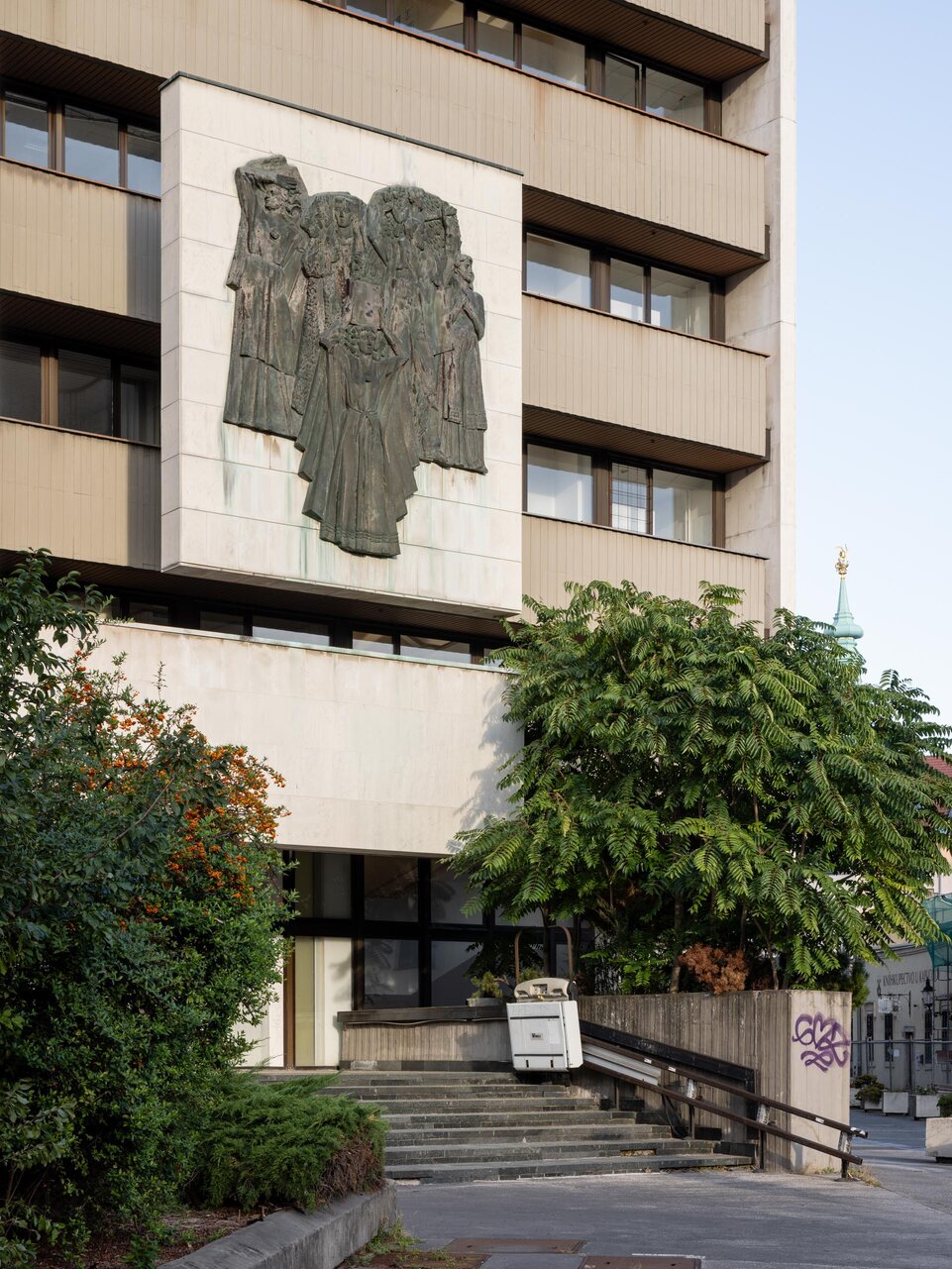The Slovak National Uprising Memorial, built on the occasion of the 30th anniversary of the Slovak National Uprising (SNP), is an example of a heroic commemorative memorial built to conform to the normalisation criteria of triumphal aesthetics.
Sculptor of the memorial was J. Kulich, a representative of official committed art who created works in the spirit of socialist realism. He followed a conservative representational model, an example of which is his favouring of figures on pedestals in his design for the Slovak National Uprising Memorial.
The extensive sculptural and architectural composition is set in a triangular shape on slightly sloping terrain in the upper part of SNP Square. It comprises three monumental figures who face down the square from raised terraced steps. On a projecting foreground in the axis of approach is the sculpture of a heroic partisan – the personification of fierce determination for the Uprising, he stands astride with characteristic submachine gun and hooded cloak. Further back on a higher terrace the figures of two women, a sorrowful mother and a weeping wife, complete the traditional scene of farewell for a departing partisan. The entirety is defined by theatricality of posture – heroic pathos and emotionally charged gestures designed to stir the emotions of the viewer. The disparately spaced figures bring an element of incongruity to the composition, hence the memorial’s colloquial name "Quarrelling Family". The intention of the loose arrangement was to allow people to touch the statues and to move among them.
The commemorative space was completed by three torches symbolising eternal fire that have now been removed, verses by Ján Kostra carved into the wall, and brackets for the hanging of wreaths. In the author's conception, the pathway across greenery to access the memorial symbolised “the mighty rise of the people in turbulent times, which resulted in the historical turning point expressed by the memorial”, or rather by the sculptural figural component that represented its ideological core.
The Slovak National Uprising Memorial emerged as the winning design of a competition, one of many that had been organised since the 1960s. Several years after its construction, restaurants and cafés featuring custom-designed interiors, numerous artworks, and outdoor seating were completed behind it by the ŠPTÚ team (Ladislav Kušnír, Cyril Rovňák, Ivan Slameň, Branislav Somora, 1976–1978). Simultaneously, traffic was eliminated from the area behind the memorial to create a pedestrian zone. The plan was to create a space for relaxation in the natural environment around the memorial, although also to some extent to cover the façade of the neo-Romanesque Calvinist church built in 1913. Landscaping of the grounds and greenery was carried out by ZARES (Bratislava City Gardening and Recreation Services).
In 2019, the memorial surroundings were partially revitalised (pavement replaced, benches repaired, posts installed to prohibit cars), and in 2021 the bronze statues were restored.
The Slovak National Uprising Memorial forms part of the Living Square project, an urbanistic-architectural design yet to be implemented for revitalisation of the SNP and Kamenné Squares.
NB
Research status as of 5 February 2024.



